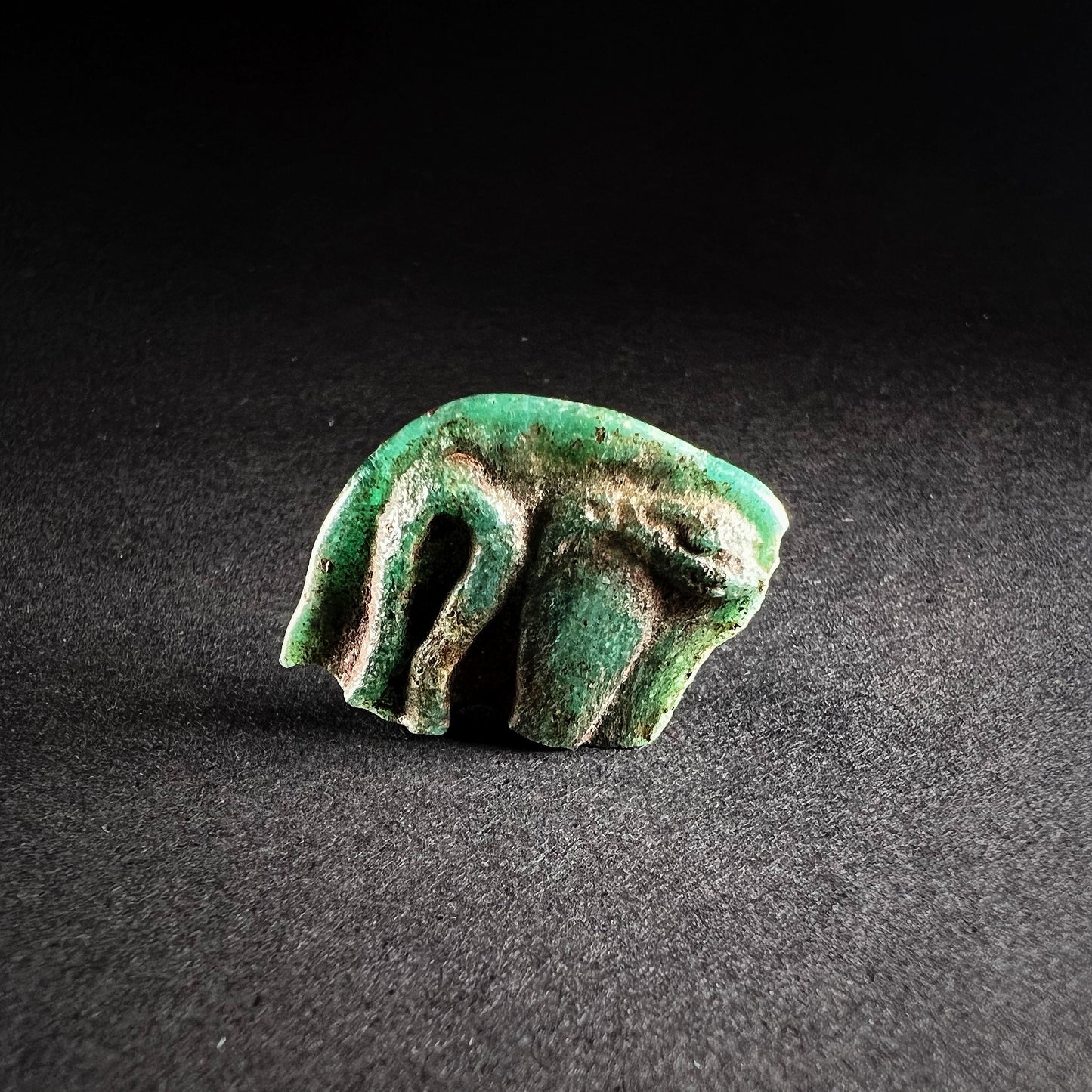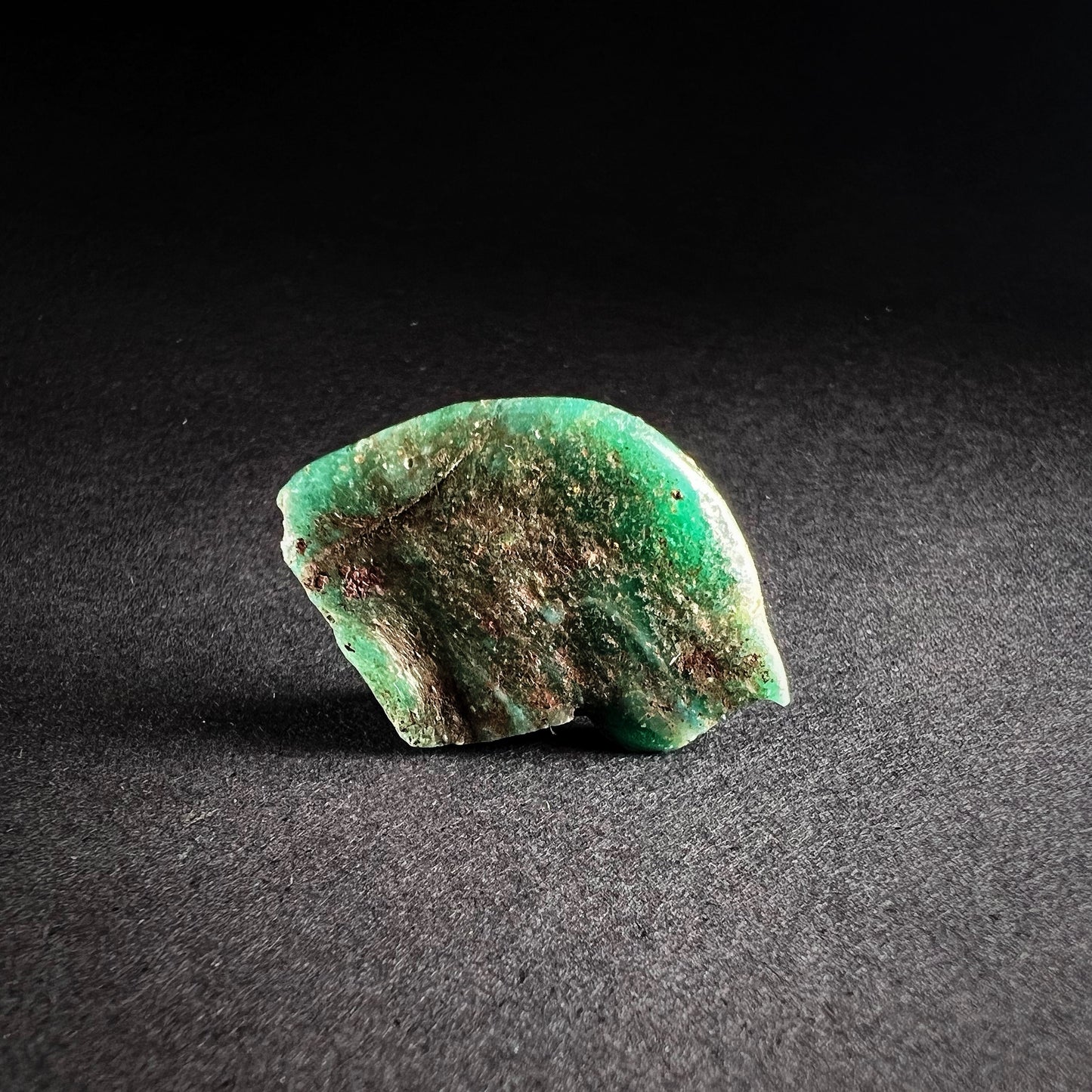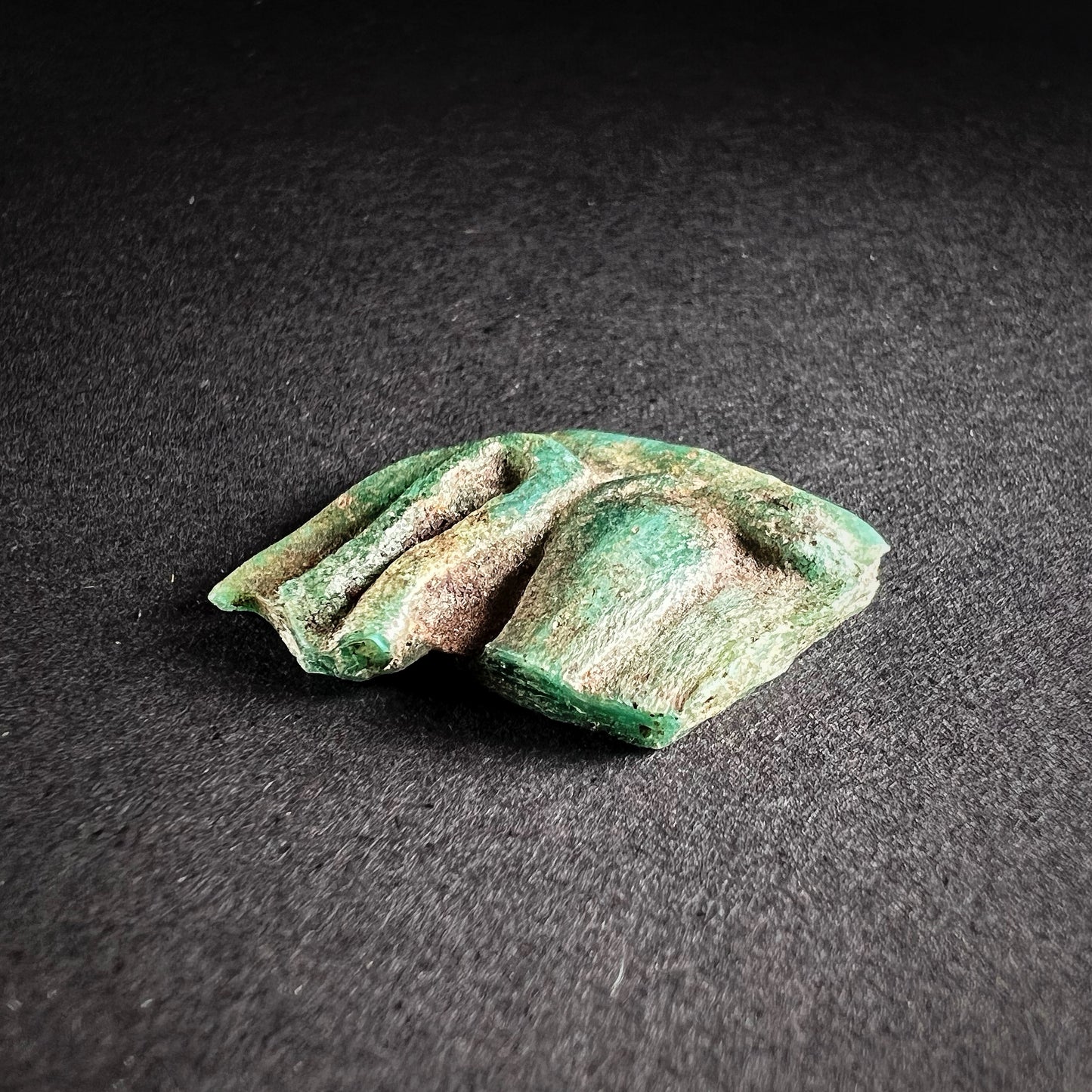Egyptian Glass Amulet Plaque of an Erect Uraeus Cobra
Egyptian Glass Amulet Plaque of an Erect Uraeus Cobra
Couldn't load pickup availability
Late Period to Ptolemaic Period, c. 664–30 BC, Egypt
An exquisite and richly symbolic fragment, this mold-formed glass amulet plaque features the iconic uraeus cobra, masterfully rendered in delicate detail. The cobra is depicted in its classic upright and rearing stance, with its hood dramatically flared, the coiled body tucked behind its head, and the tapering tail trailing downward. The narrow head displays pronounced, watchful eyes and a closed, composed mouth—capturing the poised and potent presence of this powerful symbol.
The uraeus was far more than a decorative motif in Ancient Egypt—it was a divine emblem of kingship, protection, and authority, commonly associated with the goddess Wadjet of Lower Egypt. Seen on the brows of pharaohs, often forming part of their crown regalia, the uraeus was believed to spit fire at enemies, shielding its wearer with supernatural force. It adorned temples, thrones, sarcophagi, and statuary—and was frequently worn as an amulet for both spiritual and physical protection.
Crafted in richly coloured turquoise-green glass, a luxury material in the ancient world, this piece would likely have been part of a personal amulet worn during life or placed among mummification wrappings to safeguard the deceased in the afterlife. The cobra, a creature linked to regeneration due to its skin-shedding nature, was also a symbol of rebirth—tying this piece directly to beliefs about resurrection and eternal protection.
Amulets like this were not mere adornments; they embodied the deep spiritual convictions of Ancient Egyptians, who believed that form and symbolism could invoke divine power. This striking fragment, though modest in scale, would have carried immense apotropaic force, serving both as a token of personal devotion and royal association, and as a powerful talisman against the forces of chaos.
Moderate condition. Fragment. Surface wear and abrasions commensurate with age, with nicks and chip. Encrusted rich patina. Size approx. 1,9cm x 2,3cm x 0,9cm.
Provenance: British private collection.
References and further reading:
Amulets of Ancient Egypt, Carol Andrews, University of Texas Press, 1994.
Talismans & amulets, Felicitas H. Nelson, New York: Sterling, 2008.
Ancient Egyptian Amulets, Isabel Stünkel, In Heilbrunn Timeline of Art History, New York: The Metropolitan Museum of Art, February 2019. (http://www.metmuseum.org/toah/hd/egam/hd_egam.htm)
Handbook of Egyptian mythology, Geraldine Pinch, Santa Barbara, Calif.: ABC-CLIO, 2002.
Egypt in the New Kingdom (ca. 1550–1070 B.C.), Catharine H. Roehrig, In Heilbrunn Timeline of Art History, New York: The Metropolitan Museum of Art, October 2000. (http://www.metmuseum.org/toah/hd/nking/hd_nking.htm)




-
Shipping
The shipment will be prepared in the course of 3-5 days and dispatched via Posti Group Oyj or purchased item(s) can be picked up from our shop during the store's opening hours (Tarkk’ampujankatu 4, 00140, Helsinki, Finland). Within the Finland, all items are shipped via Posti Group Oyj unless otherwise requested. We pack the items carefully and mainly in recycled materials because we want to save nature. You will receive the tracking number for your items by e-mail.
-
Returns
Returns and exchange will be accepted within fourteen days (14) of receipt at the purchaser’s cost to include freight and packaging. Items must be returned in the same condition as when they were shipped, and will not be accepted if damaged or altered in any way. Please inform us via email (info@gotanmaailma.fi) or by calling +358408408352 before sending. We do not accept returns more than 14 days after delivery.




